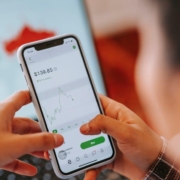Mastering the Flow of EUR/USD with Moving Averages
Price action can be noisy. Candlesticks rise and fall, charts stretch in all directions, and yet hidden within all of it is rhythm. Traders who learn to recognize that rhythm often turn chaos into clarity. One of the simplest tools for uncovering that rhythm is the moving average. Whether you are new to EUR/USD trading or looking to refine your edge, moving averages can offer structure, timing, and insight with every shift of the market.
At its core, a moving average smooths out price action by averaging past prices over a specific period. This creates a line on the chart that shows the general direction of the market. The most common types are the simple moving average and the exponential moving average. The simple version gives equal weight to all prices in the calculation. The exponential version gives more weight to recent prices, making it more responsive to current market conditions.
In EUR/USD trading, moving averages are not just used for trend identification. They also act as dynamic support and resistance levels and serve as entry and exit signals when used with other tools.
Choosing the Right Time Frames
There is no one-size-fits-all setting for moving averages. Day traders often use shorter periods like the 9, 20, or 50 to capture quick shifts in momentum. Swing traders may prefer the 100 or 200 to stay aligned with the broader market direction.
On a four-hour EUR/USD chart, a 20-period exponential moving average can help identify short-term trend reversals. On the daily chart, the 200 simple moving average often marks long-term trend direction and major decision points. The key is consistency. If you use moving averages across different time frames, keep your logic clear so your signals do not conflict.
Crossover Strategies for Clearer Signals
One of the most popular strategies is the crossover method. This involves using two moving averages on the same chart. A bullish signal occurs when the shorter average crosses above the longer one. A bearish signal happens when the shorter average drops below. For example, when the 50 crosses above the 200, some traders call it a golden cross. When the reverse occurs, it is known as a death cross.
In EUR/USD trading, crossovers work best when supported by rising volume or strong momentum. They are less effective in choppy or sideways markets, where false signals are common.
Moving Averages and Market Phases
Markets tend to move in trends and ranges. In trending markets, moving averages slope clearly in one direction and price often pulls back to touch them before continuing. In ranging markets, moving averages flatten and price weaves above and below them with little respect. Understanding the phase of the market helps determine how to use moving averages effectively.
For EUR/USD traders, the pair tends to trend cleanly after major economic reports or central bank announcements. During quieter sessions, it may stay within a defined range. Adjusting your use of moving averages based on this rhythm is part of mastering their power.
Combining with Other Tools
Moving averages work best when paired with other forms of analysis. Many traders use them with RSI or MACD to confirm signals. Others draw trendlines and wait for confluence. In EUR/USD trading, it is common to see traders use moving averages to find direction and then rely on price action for actual entry and exit timing.
An example would be using a 50-period moving average to define trend and then looking for bullish candlestick patterns when price pulls back to the line. This combination offers a structured yet flexible approach.
Moving averages do not predict price. They reflect what price has already done and help smooth the picture so you can see more clearly. When used with intention, they can guide decision-making, filter out noise, and reveal hidden structure in the EUR/USD pair. Whether you are scalping on the five-minute chart or holding positions over days, moving averages can provide the steady rhythm needed to stay in sync with the market.
In the fast-paced world of EUR/USD trading, where headlines shift sentiment and trends evolve quickly, a simple line on the chart can become one of your most trusted tools.

